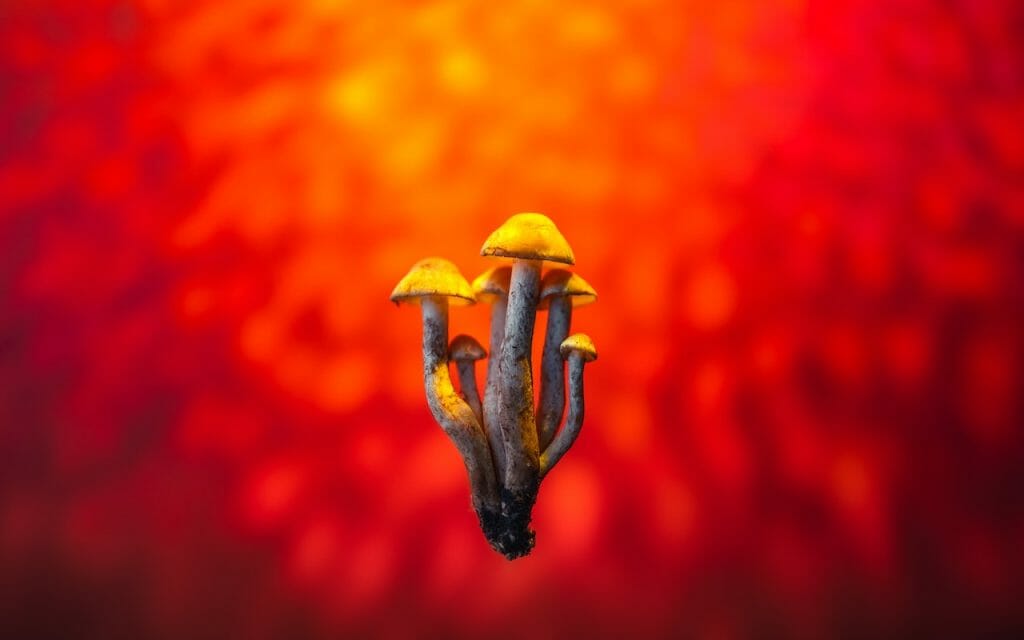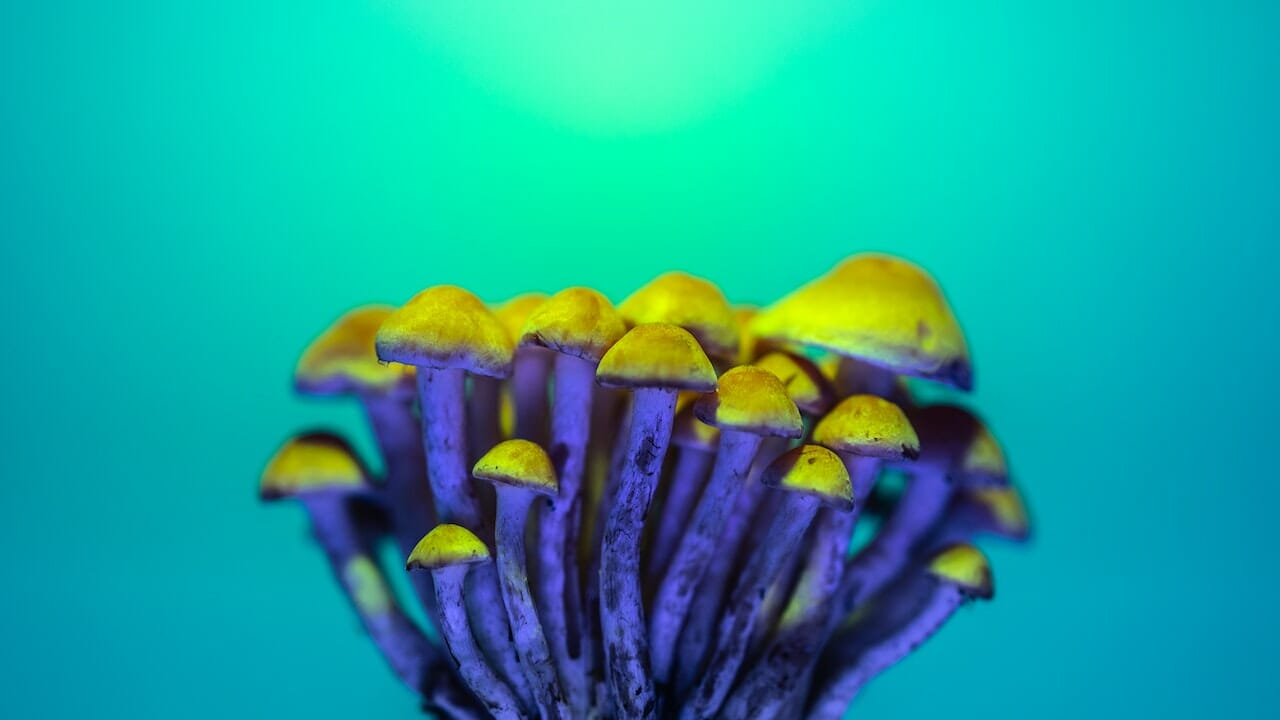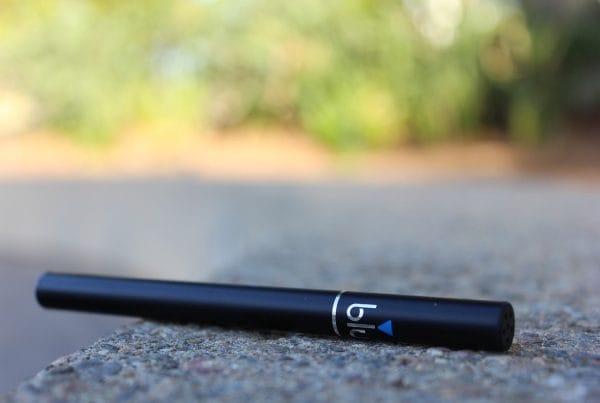LSD (lysergic acid diethylamide) is a potent hallucinogen that has been widely studied among psychedelic substances. Originally known primarily for its recreational usage, LSD has evolved into a psychoactive compound offering potential mental health benefits. This change in perception has paved the way for further research into the effects of LSD in more palatable forms, such as LSD edibles.
Key Takeaways:
- LSD, a powerful hallucinogen, originates from the ergot fungus.
- LSD shares similarities with psilocybin and interacts with the 5-HT2A receptors.
- LSD can induce visual alterations, mood changes, ego dissolution, and pseudo-hallucinations.

About LSD
LSD is an exceptionally potent hallucinogenic drug that can dramatically shift a person’s perception of reality and profoundly distort the senses. LSD is derived from “ergot“, a type of fungus that grows on rye and other grains.
At the molecular level, LSD is a complex ergoline family chemical. It comprises a bicyclic hexahydroindole group and a bicyclic quinoline group (lysergic acid). The name ‘Lysergic Acid Diethylamide’ is derived from the functional group attached to its core. LSD’s structure is akin to other ergoline alkaloids, such as ergotamine, found in the ergot fungus Claviceps purpurea, and the neurotransmitter serotonin.
LSD’s Effects
Upon consumption, LSD enters the brain, sparking chemical reactions that can persist for several hours. LSD may induce the following short-term effects:
- Unforeseen mood swings
- Distortion of perception
- Vertigo
- Decreased appetite
- Disrupted motor control
The Advantages of LSD
What are the Benefits of Using LSD?
The benefits of LSD are multifaceted, largely depending on the dose taken. A lot of research concentrates on the advantages associated with small amounts of this psychedelic substance. In the following sections, we will explore the positive impacts of LSD use.
Pain Management and Neuronal Growth
Researchers at Maastricht University discovered that a single microdose of LSD can induce pain-relieving effects that persist for at least five hours, if not more.
In the Cold Pressor Test, where participants immerse their hands in 3°C (37.4°F) water for as long as possible, individuals who took a 20 mg dose of LSD managed to keep their hands submerged 20% longer than those who didn’t. They also reported feeling less pain and discomfort.
Additionally, LSD can contribute to the development and growth of our brain’s 86 billion neurons. Moderate doses of LSD, ranging from 5 to 20 ug, raise the blood plasma levels of BDNF. This is significant, as mood disorders like depression, often associated with neuroplasticity issues, could be eased due to LSD’s beneficial effects on neuronal health.
Improvement of Mental Health
Dr. Robin Carhart-Harris from Imperial College London put forth the entropic brain hypothesis. This concept proposes that mental health disorders can be attributed to rigid thought patterns, sustained by an excessively active default mode network (DMN). Psychedelic substances such as LSD have the potential to disrupt the DMN, increase brain entropy, and aid in dismantling negative neural pathways while promoting the creation of positive ones.
A study involving more than 1,000 microdosers reported a decrease in depression symptoms. Another extensive cross-sectional study showed a reduction in negative moods and harmful attitudes, along with increased open-mindedness and cognitive abilities.
Application in Addiction Treatment
A meta-analysis of randomized-controlled clinical trials using LSD in psychiatry demonstrated its greatest effectiveness in treating alcohol addiction. This conclusion is further backed by the positive results reported by many patients treated for alcoholism by Humphrey Osmond and at the Spring Grove Hospital Centre during the 1950s and 1960s.
Easing Anxiety and Depression at Life’s End
Dr. Peter Gasser discovered that LSD-assisted psychotherapy could significantly reduce anxiety associated with end-of-life in terminally ill cancer patients. This treatment also improved their perceived quality of life. Currently, a Phase 2 trial is underway to examine the potential effectiveness of LSD therapy in treating depression.
Exploring LSD Edibles: Their Composition and How They’re Made
LSD edibles are a category of consumable goods that incorporate the hallucinogenic substance, LSD. They come in various forms, including chocolates, candies, baked goods, and even unique products like LSD mints.
The Ingredients
- LSD: This is the active hallucinogenic ingredient. It is carefully measured and incorporated into the edible.
- Edible Base: The LSD is usually infused or dissolved into a consumable substance like a gummy, candy, sugar cube, or other ingestible items. These substances act as the delivery mechanism for the hallucinogenic compound.
- Flavouring and Ingredients: The specific edible may contain flavourings, sweeteners, and other ingredients to enhance its taste and texture. These can range from natural or artificial flavours, colours, and sweeteners, and may considerably vary.
The Making Process:
- LSD Synthesis: The process begins with the chemical production of LSD. This requires in-depth knowledge of organic chemistry and the availability of necessary chemicals, equipment, and a laboratory setting.
- Liquid Formulation: Once the LSD is synthesized, it is usually transformed into a liquid by dissolving it in a solvent. This liquid serves as a concentrated LSD solution.
- Infusion: The liquid LSD is then infused into an edible medium like gummy candies, sugar cubes, or blotter paper. The infused medium absorbs the liquid, enabling the LSD to be taken orally.
The Psychedelic Effects of LSD Edibles’ Psychoactive Compounds
LSD triggers intense visual effects. Colours appear more vivid, objects may seem to have halos or rainbows around them, and shapes can transform. Regardless of whether the user’s eyes are open or closed, they may see
LSD, a psychedelic compound, brings about vibrant, rapidly changing geometric patterns and other visual distortions, which are often referred to as “pseudo-hallucinations”. This is because individuals under its influence understand that these visuals are merely drug-induced and not based on reality.
LSD serves as a tool for modifying one’s self-perception and interpretation of the environment. It can induce a range of mental states, making thoughts appear clear and meaningful or potentially disjointed and illogical. The drug can also alter perceptions of time, distance, and self-image. The boundary between the self and the external world may appear less distinct. Some users even report a merging of senses, such as seeing music or hearing colors.
Suggested LSD Products
Although there are various LSD edibles available, it’s essential to buy from a trustworthy dispensary. This ensures that the edibles contain LSD and are free from other substances like PCP (a powerful dissociative drug), ecstasy, or ketamine.
Deadhead Chemist – LSD Infused Gummies
Deadhead Chemist offers LSD-infused edibles, with each gummy containing 100 micrograms (ug) of LSD and available in a wide range of flavors. Each pack comes with a single gummy, which has demonstrated potential benefits for people suffering from conditions like obsessive-compulsive disorder (OCD), post-traumatic stress disorder (PTSD), alcoholism, depression, and cluster headaches.
Deadhead Chemist – Mint Tea
Deadhead Chemist’s raspberry mint tea provides a more palatable and tasty way to experience LSD’s effects. LSD and similar psychedelics mimic the serotonin neurotransmitter, enhancing the brain’s flow state.
Earthly Delights – Candy Flips
Candy flipping emerged during the rave culture of the late 1980s and continues to be enjoyed by thrill-seekers and party-goers to this day. Users often describe intense emotions of love and interconnectedness, coupled with stunning visual effects like enhanced colors, morphing objects, and complex geometric patterns.
Concluding Remarks
LSD has traditionally been linked with transformative experiences. As our scientific knowledge of this substance has grown, so has its popularity, and the rise of LSD-infused edibles provides a new possibility for users. These delicious delights are now becoming
Undertake your LSD journey in a safe and enjoyable manner with carefully measured doses.
As Canada’s leading supplier of premium mushrooms online, Strongest Magic Mushroom Strain Canada offers an extensive selection of LSD-laced edibles and cannabis products. Take your time browsing our assortment, add your desired products to your cart, then sit back and relax as we handle the delivery. We also offer a broad selection of psilocybin mushrooms, edibles, drinks, and capsules for your convenience. Don’t forget to check out our LSD delivery page for further details!
Frequently Asked Questions
What sets LSD apart from psilocybin?
| CHARACTERISTICS | LSD | PSILOCYBIN |
| Origin | Semi-synthetic chemical compound | Naturally occurs in fungi |
| Available Forms | Tabs, microdots, liquid, gummies, blotter paper | Dried mushrooms, capsules, teas, chocolates |
| Potency | Highly potent, microgram doses (ug) | Varies based on mushroom species and preparation |
| Onset and Duration | Fast onset (15-60 minutes), short duration (3-5 hours) | Gradual onset (30-60 minutes), moderate duration (4-6 hours) |
How can one avoid adverse experiences with LSD?
- Consciously Choose Your Environment
- Cultivate a Positive Mindset
- Start with a Small Dose
- Arrange for a Trip Supervisor
- Create a Peaceful Atmosphere
- Utilize Deep Breathing and Grounding Techniques
- Accept and Release
How long do the effects last?
The effects of the acid usually begin to show between 30-60 minutes after ingestion. Those who are more sensitive to psychedelics may start to feel the effects In just 15 minutes, you could start noticing the effects. Roughly one hour after consumption, you’ll be able to discern if you’ve consumed LSD. The apex of your trip will typically occur around three hours into your experience. It’s not unusual to experience a warped sense of time and hallucinations during this period.
Hold on, feeling detached from reality in this stage is quite normal. This peak phase lasts for about 3 to 5 hours, succeeded by an offset phase that continues for an additional 3 to 5 hours.
How does LSD interact with the human body?
LSD primarily engages with the brain’s serotonin system by binding to and activating the 5-HT2A receptor. This interaction sets off a chain of neurochemical and physiological responses. Certain factors can influence the effects of LSD, which can vary significantly.
Does LSD come in forms other than edibles?
Yes, LSD is available in several forms. The four major types include blotter paper, liquid solutions, tablets or microdots, and gelatin sheets.
Further Reading:






